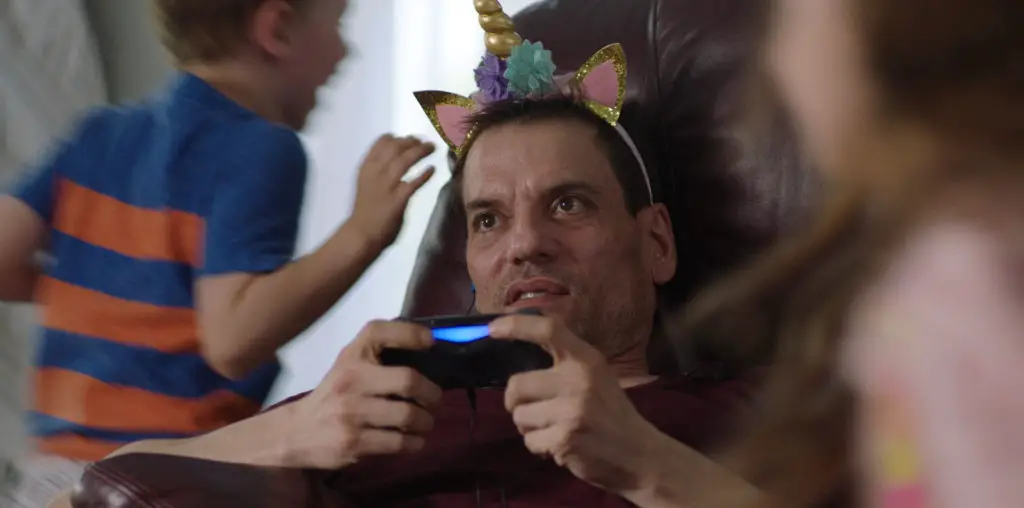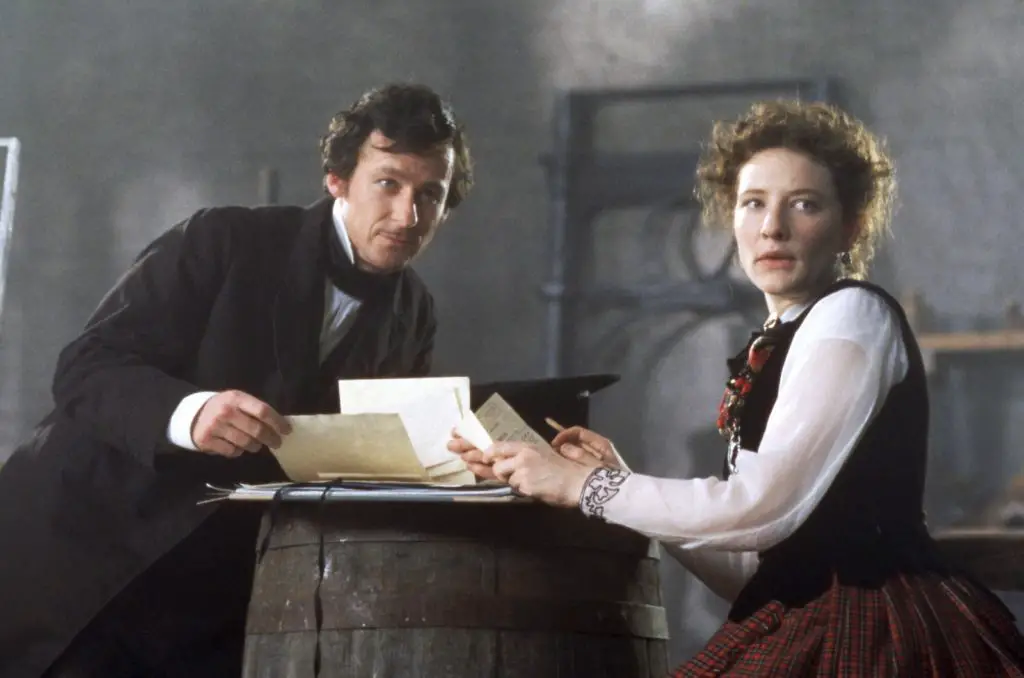
“Bodies. Dead bodies! Oh my god!” cries author Mary Roach, standing atop a short, grassy knob of lawn around which two dozen human shapes (most of them faced down, one or two faced up) are scattered about in every direction. “It’s a body farm!” yelps Roach, staring wide-eyed for a few seconds before trading the expression in for a wicked, happy grin as she adds, “But hey, it really doesn’t smell too bad.”
Roach, thankfully, is only kidding around. The splayed corpses we see are really just the sleeping bodies of sun-soaked recreationists, enjoying a quiet Sunday afternoon in the park. The day is sunny and warm, precisely why we’ve chosen this spot to sit and talk about Identity, a nifty new horror movie starring John Cusack and Ray Liotta.
Perhaps it’s not that strange that Roach, a San Francisco-based science writer with a well-developed silly streak, would imagine that all the sleeping people around us are dead. After all, we’ve just seen a film in which ten people, stranded in the rain at a desert motel, take turns being beheaded, gutted, strangled, shot, smothered and, uh, toasted alive. If that weren’t enough to skew her view, Roach has also just spent two years among the dead, whole and in parts, as research for her sensational new book Stiff: The Curious Lives of Human Cadavers (Norton, $23.95). As funny as it is, well, kind of creepy, Roach’s 12-chapter free-for-all is a study of the ways in which dead human bodies, from ancient days to the present, have given their all in the pursuit of important scientific, medical, industrial and philosophical knowledge. In her research, Roach spent time with plastic surgeons as they gave free face-lifts to the sawed-off heads of body donors. She learned about crucifixion experiments performed in 1931 to authenticate the Shroud of Turin. And she visited a very real “body farm,” in Tennessee, where scientists study the process of human decay.
Once we’ve settled down on the grass with our cups of coffee, I begin our conversation. “First,” I say, “I want to ask about a few specific things in the film.”
“The head?” Roach guesses.
Yep. The head. The gnarly noggin is discovered early in the film, being tumble-dried in the motel’s noisy, coin-operated clothes dryer. A tad cliché, it’s nevertheless a fine cinematic moment, and Roach, as expected, has one-or-two first-person thoughts to share.
“I knew it was a head banging around in there. Kathunk! Kathunk!” she smiles, almost sweetly. “I guessed it was a head because of the weight. Yes, I now know how much a human head weighs. And that noise was way too heavy for a hand or a foot. What else could it be? A torso wouldn’t fit in that particular large appliance, so it pretty much had to be a head.”
“How much does a head weigh?” I have to ask.
“About eleven pounds,” Roach replies. “Roughly the same as a bowling ball or a large roaster chicken.”
That’s good to know, but at this point, I can’t help wondering why, exactly, severed heads freak people out so much. From the original “House on Haunted Hill” and “The Godfather” and Apocalypse Now all the way to “8 Heads in a Dufflebag” and the recent season of “The Sopranos,” many of Hollywood’s best cinematic jolts have involved the unhappy discovery of a bodiless head. Bottom line – heads are scary. Even Shakespeare, who was capable of melting an audience with his words alone, was not above rolling a few heads onto the stage if a play needed a fresh jolt in the third act.
“Why,” I ask Roach, “do you suppose the severed head has become such an effective horror film cliché?”
“A head is the thing we recognize people by,” she says. “Remember that scene in Apocalypse Now, when Marlon Brandon drops that guy’s head in Martin Sheen’s lap? ‘Here’s his head! Here’s his face! Auugghhh, It’s in my lap!’ It’s horrifying because a head is the brain, and it contains the personality of a person.
“A severed knee,” says Roach, smiling again, “is just never going to have that same effect. “Heads are difficult, under any circumstances,” she continues. “When I was doing my research, the woman who was setting up the plastic surgery practice lab, depositing each head in its own aluminum roasting pan, she admitted that she only copes with her job by thinking of the heads as wax.
“Across the board,” she continues, “the head and the hands are what people who work with dead bodies find the most difficult to deal with. The head and the hands are the parts we most often see of a person. It’s very hard to make heads or hands impersonal.”
Toward the end of Identity, a well-crafted film, by the way, that is far more than the sum of its parts, there is a scene in which the shell-shocked characters gather in the rain to hold a quick discussion of cremation. Basically, they need to know how long it takes for the average body, if caught in a fiery explosion, to be reduced to nothing but ashes.
“I never actually observed a cremation, but there’s a very nice description of cremation in Stiff,” Roach offers. Opening her book, Roach finds a 1963 quote by one W.E. Evans, a former senior lecturer in Morbid Anatomy at the University of London. “Skin and hair at once scorch, char and burn,” she reads. “Heat coagulation of muscle protein may become evident at this stage.” There is more like that, and it’s all just as tasty, especially the bit about ballooning abdomens “due to formation of steam and the expansion of gases in the abdominal contents,” but her point has been made.
“Cremation,” Roach sums it up, “takes quite a while, because there’s a lot of stuff going on during cremation. So when John Cusack said, ‘It’s impossible! There would be something left.’ I was thinking, ‘Right on, buddy. You know your s**t.’
While the film is fairly creative in regards to the murders, Roach felt the script’s inventiveness began to wane shortly after one character is found with a baseball bat rammed down his throat. The unfortunate bat-man’s death was a neat trick, but then, just when we expect things to start getting really weird, we’re served a couple of run-of-the-mill gun shot deaths.
“Bo-ring,” sings Roach. That said, she admits that gun shot wounds can be sort of interesting. “I have a chapter about gun shot wounds,” she reminds me. “I write about the early work done with cadavers at the turn of the century, to figure out exactly what bullets did to bodies. Nowadays, they use ballistic gelatin, a ‘tissue simulant,’ the same consistency as human tissue. They use cubes of the stuff to test bullets, so they can see what the bullet does, where the bullet goes in, there’s a stretch cavity, this whole explosion that it opens up, and they can see that, so they can see if the bullets go all the way through, or if it over-penetrates, which they don’t want.”
“Ballistic Gelatin,” I remark, “would be a good name for a rock group.”
“It would,” Roach agrees. “So would Human Tissue Simulant. Science is full of terms that make good rock group names.”
The afternoon has suddenly turned cold. As we glance up, it is clear that more than half of the slumbering bodies have either stood up and gone home, or melted into the grass like residents at the Body Farm.
“In the book,” I point out, “you talk about how squeamish people tend to get thinking about the things you do in these pages, strolling past decomposing bodies, watching surgeries performed on severed heads in turkey pans. Most of us would never dream of spending a moment with a cadaver as it’s being dissected by a medical student, but we do spend millions of dollars on movies that show us make-believe versions of the same thing. Wouldn’t you think that after seeing so much simulated death on screen, we’d be less ooey-gooey about the real thing?”
“You mean medical students should be able to say, ‘I just rented ‘8 Heads in a Dufflebag,’ so I’m gonna be okay with this?’” Taking it a step further, Roach imagines a medical school instructor addressing people about to go in for their first anatomy lesson with a real cadaver. “’We’ve rented ‘8 Heads in a Duffle Bag’ for you’,” she says. “’We’d like you to sit though this. You’ll feel a lot better. You’ll thank us. Really you will.’ And, in theory that should work.”
“But, believe me, something about that dead body being real,” Mary Roach grins, knowingly, “it makes a huge difference.”
____________________________________________________________
Writer David Templeton takes interesting people to the movies in his ongoing quest for the ultimate post-film conversation. This is not a review; rather, it’s a freewheeling, tangential discussion of art, alternative ideas, and popular culture.
Discuss David Templeton’s “Talking Pictures” column in Film Threat’s BACK TALK section! Click here>>>

